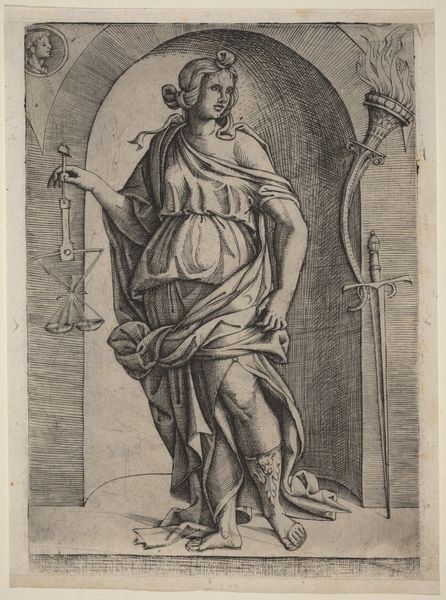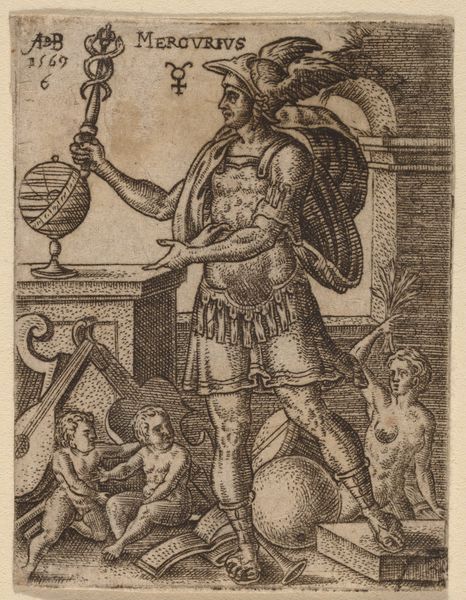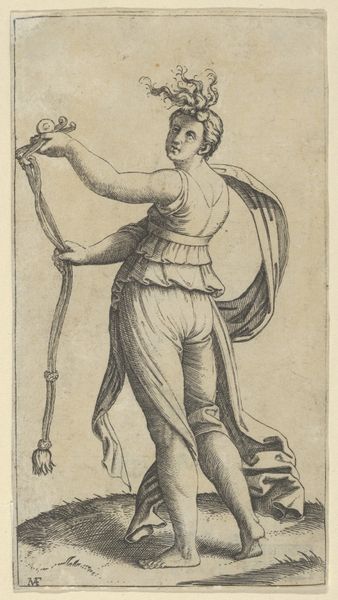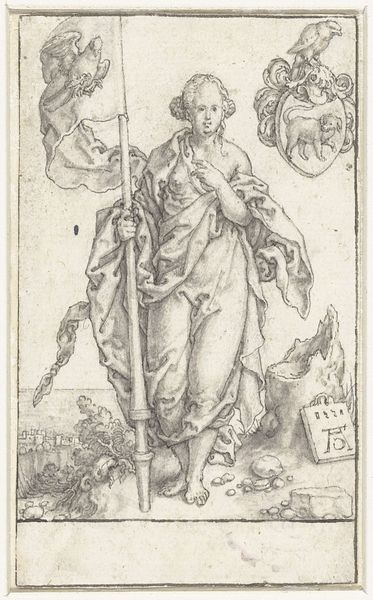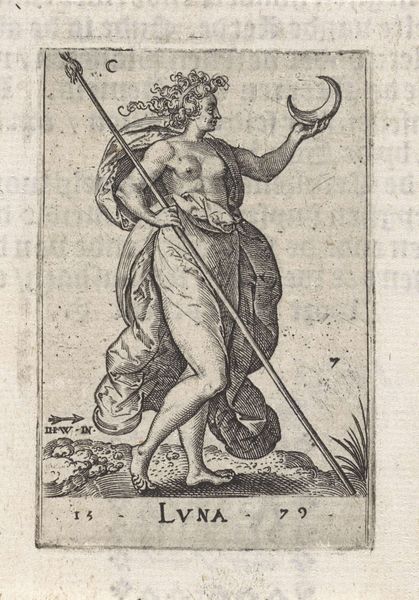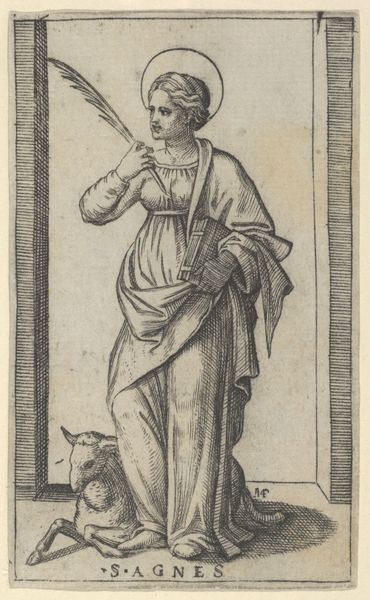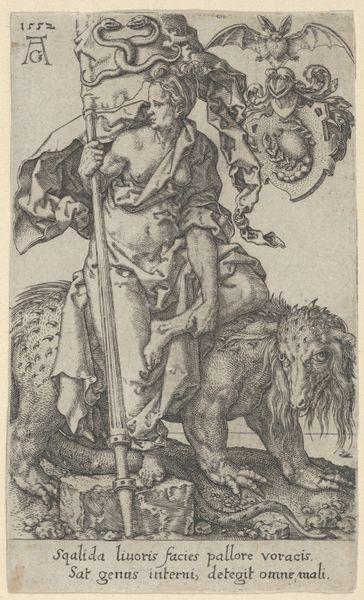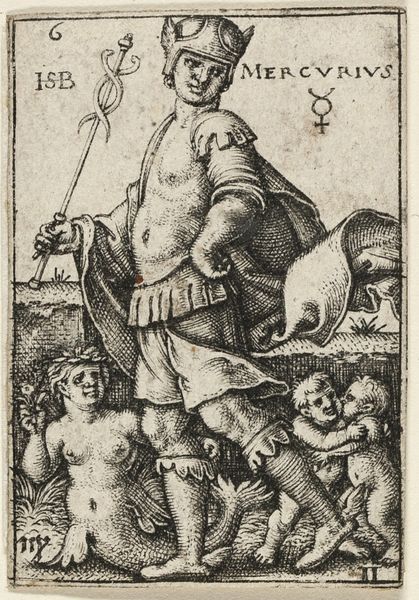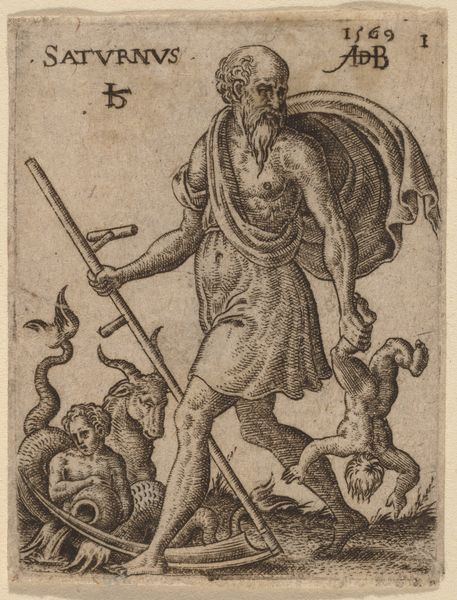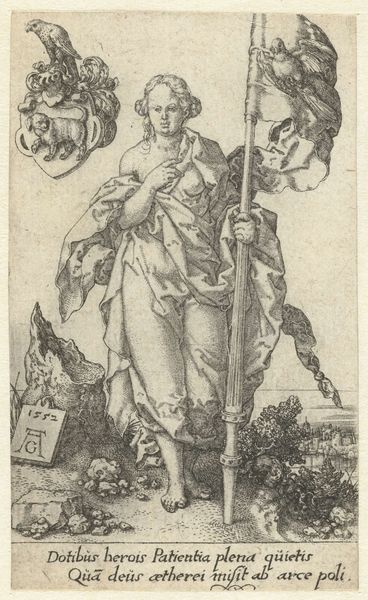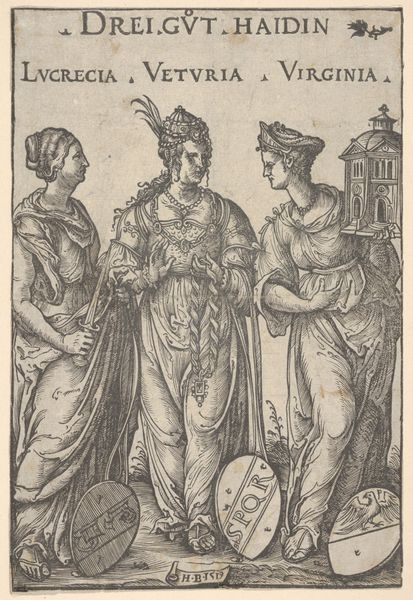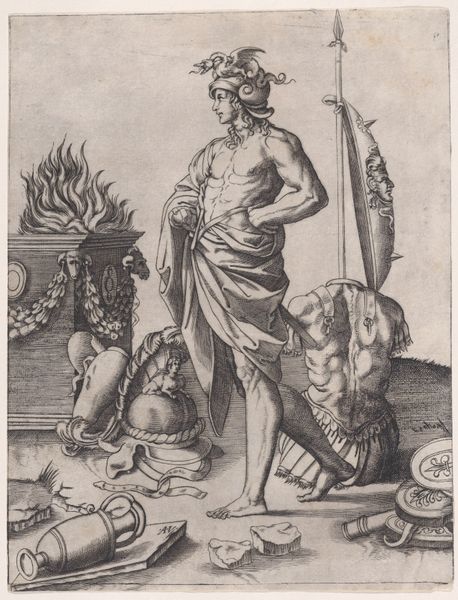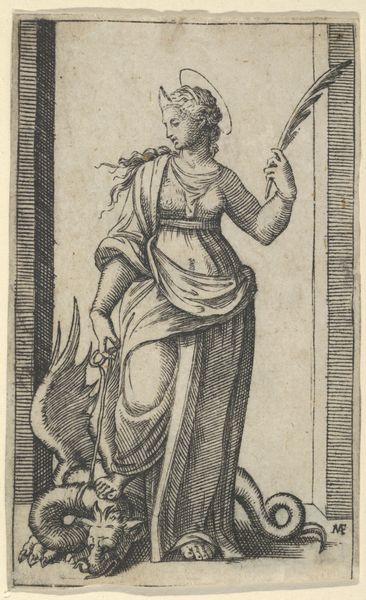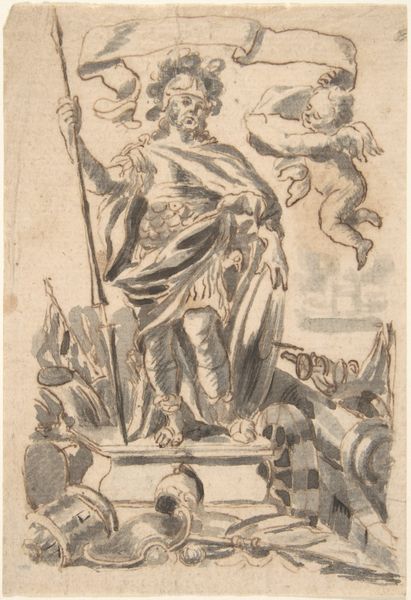
print, engraving
#
allegory
# print
#
mannerism
#
figuration
#
mythology
#
nude
#
engraving
Dimensions: sheet (trimmed to plate mark): 4.1 × 3.2 cm (1 5/8 × 1 1/4 in.)
Copyright: National Gallery of Art: CC0 1.0
Curator: Immediately, I see so much crosshatching! The artist was really committed to capturing detail with lines. Editor: Indeed! Here we have Abraham de Bruyn’s engraving, "Venus," created in 1569. It's a striking example of Mannerist printmaking. Curator: It has a peculiar stillness to it. The flames leaping from the heart feel performative. Does it speak of love's passion or its artifice? I wonder about that little cupid, he looks mischievous. Editor: As a print, its production relies heavily on craft. The copperplate would have been meticulously worked, each line a deliberate act of labor to replicate the artist’s design, turning into something reproducible. It speaks volumes about disseminating ideas about love. Curator: A profitable idea, indeed! Consider the market; this piece probably spoke volumes about courting in that time! Is she obtainable? Out of my league? Even that bull at her side suggests...power? Control? It makes one ponder, doesn't it? I’m quite drawn to the way she is glancing away from the viewer, creating a strange tension. Editor: And observe Venus’ attire. Rather than being totally nude, she's partially draped. This element also speaks of that moment's modesty. Moreover, engravings like this helped build markets for artists by expanding consumer access. Curator: Thinking about this work, I now envision De Bruyn bent over that copperplate, line after line, driven by a love perhaps for his craft! Editor: Or just driven by profit! It's fascinating to consider this "Venus" not as an ethereal vision, but as the outcome of physical labor and mercantile ingenuity. Curator: Quite. This was definitely more profound than my initial reaction! It also shows the dissemination of classics, made easily and efficiently, that can reach an untapped demographic. Editor: Likewise! This engraving provides a peek into the social history of art's creation and consumption.
Comments
No comments
Be the first to comment and join the conversation on the ultimate creative platform.
